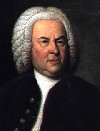The Chamber Music Society Giftwraps Bach
A Joyous Celebration
By: Susan Hall - Dec 17, 2012
Brandenburg Concertos
By J. S. Bach
Kenneth Weiss, harpsichord; Nicolas Dautricourt, violin; Ida Kafavian, violin; Areta Zhulia, violin; Yura Lee, violin; Daniel Phillips, violin; Paul Neubauer, viola; Timothy Eddy, cello; Dane Johansen, cello; Mihai Marica, cello;Kurt Muroki, double bass; Sooyun Kim, Sooyun Kim, flute; Tara Helen O'Connor, flute; Randall Ellis, oboe; James Austin Smith, oboe; Stephen Taylor, oboe; Peter Kolkay, bassoon; Caleb Hudson, trumpet; Alexandra Cook, horn; RJ Kelley, horn.
The Chamber Music Society of Lincoln Center
Alice Tully Hall
December 16, 2012
Bach packaged his six concertos called “Brandenburg” when he sent them to the Duke of Margrave, and they are often treated as one. The Chamber Music Society presents them annually as a gift to their followers. And it is always a treat. No holiday wrapping is needed. In the warm, golden wood that hugs Alice Tully Hall, the performers are illuminated on the stage, where they weave their magic.
Wu Han and David Finkle, the Artistic Directors of the CMS, write: “The Brandenburgs we are proud to rocket out into space as evidence of our highest achievements.” Surely they give off a special radiance. They are Bach's exploration of what can be done with many parts and few parts in ensemble music. Meaning and value is given to the timbres of various instruments. During the six concertos, each of the gifted musicians that form this ensemble has a chance to shine.
The music is flowing, natural, based in song, dance, or some other social entertainment form. The fugues of the Second, Fourth and Fifth concertos’ final movements are glorious, but it is often in the first movements that we begin to hear the dense thematic process, and the beginnings of dynamic development. The first movement of the Fifth has the dramatic ritornello of the Italian concerto form, and the exposition of the Fourth is very sophisticated, but basically Bach is giving us inventions, which are decorated with runs, broken triads, and variations on the main note.
The concertos similarity one to the other is in their reference to Vivaldi and also the German musical tradition. But each stands on its own and often experiments with unique musical ideas.
Grouped in the program were One, Six and Four followed by Five, Two and Three.
Hunting horns open the first. They seem to come from offstage, announcing the concerto. In Bach’s time almost every one horse seigneur and Village Depot required a pair of basses, oboes and cors de chase who wore polished shoes, powered wigs, stood behind the coach and received McDonald's level wages.
At the end a dance is struck up, as though the musicians are playing for a hunt banquet. Structure is not immediately felt and so the listener is kept in the state of delicious tension that is part of Bach’s charm. Courtly ritual is everywhere evident and the orchestration colorful as the CMS artists start their conversation, among themselves and with us.
The Sixth followed, displaying the two violas and a lovely cello line contrasting with the continuo. Neubauer's viola soared in this concerto, where other instruments are pushed into the position of second fiddle.
As the incomparable Ida Kafavian performed the Fourth’s motifs, they seemed to chase each other, but were always caught in the end. Lucid, lively and songlike, these themes are deeply embedded in counterpoint.
The Fourth and Fifth lie between tonal variety and courtly or gallant idea of a concerto and seemed to compress and intensify the concert as they concluded on half of the program and introduced the next.
In the Fifth O'Connor took the part of the transverse flute. The middle movements show a closeness to chamber music and the sonata. O’Conner and Dautricourt played delightfully with each other in distinctive passages, but it was Kenneth Weiss at the harpsichord who provided not just one voice but a complete harmonic setting. He summarizes and reflects on the ideas that other performers have introduced, his conclusion a bravura musical feat.
You could imagine the town piper’s conversing on flutes, oboes, violins join continuo in the Second. Kim on flute never showed how difficult is was, in this unusual combination of trumpet and flute, to keep the flute from drowning in the sound of the trumpet.
Bach never wrote another trumpet part of comparable complexity, but Hudson was able to draw a consistently piercing pure tune from his piccolo trumpet and brought down the house.
The Third which concluded the program is like the Sixth in its unified tonal color in all levels and nuances. The ritornello is crucial to the work. It's not simply an initial figure nor is it a complete exposition. It drives the piece in form, and its energy flows from rhythm.
Bach is said to have been a man attuned to rhythm in all his parts, and all the parts of the CMS reflect this. I could not take my eyes of Dautricourt, the young French violinist who did a courtly dance throughout the evening, moving forward too emphasize, dipping and pulling back, ever courtly, making the music of his instrument move with him. Even his bow was distinctive: he simply held his instrument, head down, out to us, modestly honoring the instrument not his compelling performance.
Distinctive renderings of individual motifs played by each group are followed by passages playing altogether. Pent up reserve of power that never fully reveals itself and leaves us waiting for the next performance.
Expressive delivery with meticulous development of themes and complexity of form charged the Brandenburgs, as the CMS performed with such immediacy the music felt like it was written today. A joyous celebration.

